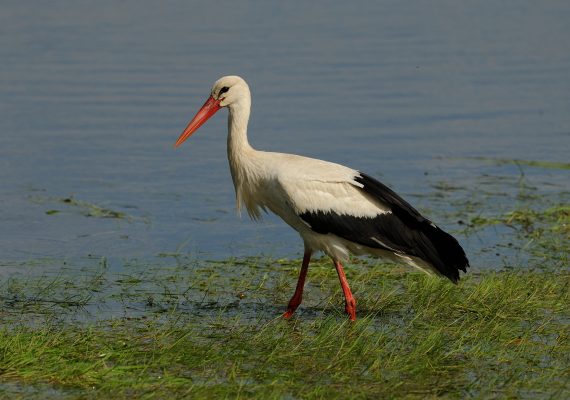What is new in 2023 data update?
December 11, 2023
Since 2022, we do our best to collect data with only one-year delay. We are grateful to all the national coordinators for their effort to deliver their data up to 2022 for the 2023 update.

Despite the agricultural intensification, Europe's White Stork population has increased. In 2024, the eighth International White Stork Census will take place, which happens once in 10 years. Photo by Tomáš Bělka (www.birdphoto.cz)
- We produced indices and trends for 170 common European species based on data from 30 countries.
- The number of species published in 2023 remained the same as in previous years.
- Almost all countries delivered their data up to 2022, except France and Slovakia. Therefore, we use the same indices of these countries as the previous year (till 2021).
- We publish the indices and indicators in the downloadable tables with standard errors following the confidence limits. The reason is to provide standard errors for the researchers who prefer to use them. Of course, confidence limits must be corrected if their value should be negative, but standard errors need no corrections.
- We decided not to publish BioGeo indicators anymore. If you are interested in these indicators, please get in touch with PECBMS. We will provide you with this data.
- We again used the updated country population sizes published in BirdLife International (2021): European Red List of Birds to weight national indices while calculating supranational indices and trends.
- The indices might be slightly changed because of a combination of changes in some countries. Romania revised the start years of all the species and prolonged the period to 2007–2022, this year. However, the indices and indicators generally are consistent with the outputs published in the previous year.
- Due to Brexit in February 2020, we calculated all EU bird indicators by excluding data from the United Kingdom. We follow the EUROSTAT procedure. Hence, we removed the UK data from the whole time series to create the indicators without the country no longer being considered a part of the EU. EU indicator calculation without the UK was done for the first time in the 2022 update and will be done yearly. It is possible to compare the ‘EU indicator without the UK’ and ‘EU indicator with the UK’ in one graph on the PECBMS webpage.
The UK appears in all species’ indices and non-EU indicators as usual. - As usual, two species (Oenanthe cypriaca and Sylvia melanothorax) haven’t been included in the common bird indicators for Europe and the EU, as they are endemic species for Cyprus. Consequently, only 168 species are included in common bird indicators. The number of species included in common farmland and common forest bird indicators for Europe and the EU remained unchanged (39 farmland species and 34 forest species).
- Most national coordinators use an updated version of a tool to calculate national indices (developed in Statistics Netherlands) called RTRIM-shell. The tool uses the RTRIM package in R to produce the same outputs as in the previous updates of the indicators.
- The R-based tool for calculating supranational species indices (RSWAN) is now used regularly.
- We used the MSI tool (developed in Statistics Netherlands) to calculate indicators.
Besides this, the computation procedure, data quality control, presented indices, trends, and indicators are generally consistent with the update in 2022. All the inconsistencies are justified by changes in national data and new population sizes used by the PECBMS.